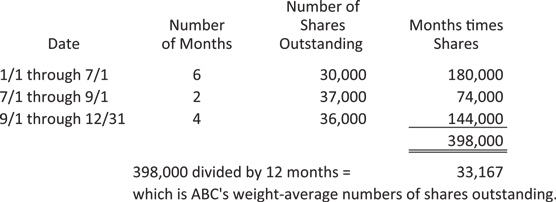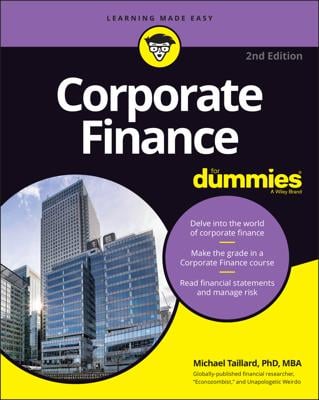 © Gorodenkoff / Shutterstock.com
© Gorodenkoff / Shutterstock.comWriting the narrative for a corporate annual report is an art. Many times, the report is contracted out to professionals rather than produced in-house, although the company’s chief executive or managing director always has a say in the format of the report.
Keep in mind that this article contains just a brief overview of what you may expect to see in a corporate annual report. Especially if a company is very large, it may include a plethora of additional information.
If you have the time, pickup Reading Financial Reports For Dummies by Lita Epstein MBA (Wiley), which walks you through reviewing financial reports from A to Z.
The chair of the board of directors
Many casual investors in a corporation have absolutely no idea who or what the chairperson of the board of directors is. While the duties of the chairperson are quite similar from company to company, the individual holding the position is unique to the particular company.The chairman of the board of directors is the head honcho who oversees the board of directors (and is usually elected by the other members of the board). The board of directors consists of individuals elected by the shareholders to guide the overall philosophy of the business.
The day-to-day activities of any business are not handled by the board of directors; they’re handled by company management. However, approving the hiring of upper management personnel, such as the chief financial officer (CFO) and chief executive officer (CEO), is a function of the board of directors.
In the corporate annual report, you meet the chairman via a letter whose salutation is something like “Dear Fellow Shareholder.” The letter gives the company’s top management team a chance to review for the users all the great accomplishments the company achieved during the preceding year. The letter also summarizes goals for the future. It ends by thanking the shareholders for their support and offering a firm promise to work tirelessly to continue earning the trust of the shareholders and growing their value in the company stock.Key financial data
In the beginning of the annual review, the company gives the shareholders a very condensed version of how well the company performed during the preceding year. This condensed information provides the lazier readers with what the company perceives as the main points of interest. At the very least, this section contains a summary of operations, earnings per share data, and balance sheet data:- Summary of operations: This summary shows the company’s bottom line net income for at least three years (and preferably five to ten years). Net income is the excess of revenue and gains over expenses and losses during a financial period.
- Earnings per share (EPS): This calculation shows the distribution of net income over all shares of the company that are outstanding. Many investors home in on this figure, comparing it to their other investments and to other companies’ EPS in the same industry. For example, an investor may compare the EPS of The Coca-Cola Company to the EPS of PepsiCo to gauge the value of one company’s stock over the other.
Three calculations you may see in an annual review are basic EPS, diluted EPS, and cash dividends. Here’s an example of each:
-
- Basic EPS: To figure basic EPS, take net income for the financial period and divide it by the weighted average number of shares of common stock outstanding. The weighted average factors in the fluctuations of stock outstanding during the entire year instead of just taking stock outstanding at January 1 and stock outstanding at December 31 and dividing it by two.
Any homework assignments or test questions in your financial accounting class will provide you with the weighted average figure (or enough info so you can figure it out yourself). See the sidebar “Calculating weighted average” to walk through a simple example.
If ABC Corp. has net income of $100,000, and the weighted average number of shares of common stock outstanding is 33,167, basic EPS is $3.02.
-
- Diluted EPS: If the company has issued stock options or long-term debt or preferred stock that the investor has the option to convert into common stock, the company also has to show diluted EPS, which is a complicated calculation. (Stock options are benefits allowing employees to purchase a special number of shares of company stock at a determined date.)
Diluted EPS calculates earnings per share by estimating how many shares could theoretically exist after all stock options and convertible debt have been exercised. So if ABC Corp.’s weighted average of common stock outstanding after adding in these extras is 35,200, its diluted EPS is $2.84 ($100,000 divided by 35,200).
-
- Cash dividends: This calculation is the amount per share paid to investors of record. It usually isn’t the same amount as EPS, although EPS is one tool the board of directors can use when deciding the dividend to pay to the shareholders of record.
- Balance sheet data: This section shows selected figures from the balance sheet in which the company believes the shareholders have an interest. For example, the company may show total assets, which are all assets (current and long-term) that the company owns as of the balance sheet date. The company may also show long-term debt, which is any debt the company won’t have paid off within 12 months of the balance sheet date.
 Select financial information
Select financial informationEven though these figures are very compressed, the figures are based upon — and must reconcile with — the audited financial statements.
Tout company achievements
In this section, which has a distinct public relations purpose, the company expands upon any facts the chairman of the board discusses in his letter to the shareholders. For example, this section may break out how the company has increased growth per capita, which is the average per person living in an area the company serves.Per capita growth could mean that the company sold more products to existing consumers or expanded its sales base into new markets or countries. Companies want to emphasize that they are attracting new customers while still maintaining a bond with existing customers.
Looking into the future
In its annual report, a company also addresses where it sees itself in the short- and long-term future. Doing so addresses any concerns that an investor may have that the business is a going concern: that it will be able to stay in business for at least 12 months beyond the balance sheet date, generating or raising enough cash to pay its operating expenses and make appropriate payments on debt.Obviously, investors aren’t going to get all fired up about their ownership in the company stock if they believe the company will be around for only a couple of more years. Therefore, annual reviews normally give at least a ten-year plan on growth methodology. A lot of times, companies associate their growth predictions with social and economic transitions — for example, changes in population demographics such as aging and income.

